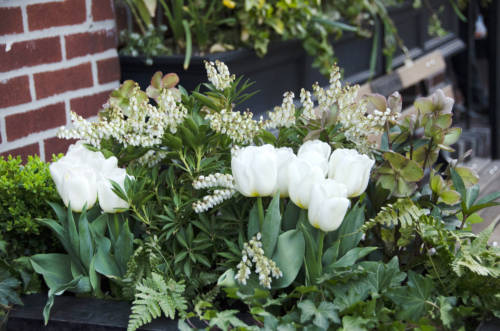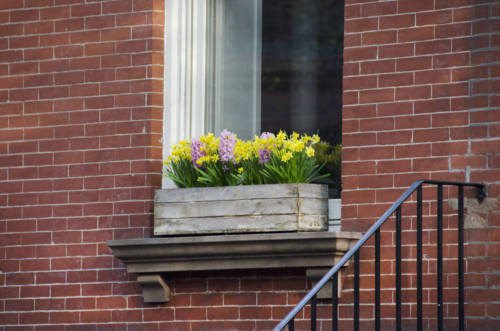A Local’s Take on the Greening East Harlem Initiative
Culture in a place like East Harlem– formerly known as Spanish Harlem, otherwise known as El Barrio– unapologetically oozes off the inhabitants’ mixture of languages and dialects and into the air by way of aroma waves from ethnic restaurants and giant murals of iconic poets like the late Julia de Burgos or the legendary Salsera, Celia Cruz.
The blending of Latino, Caribbean, and West African cultures makes this neighborhood, which stretches from E. 96th street to E. 148th street between the East River and 5th Avenue, one of New York’s most colorful and unique. Like most of Manhattan, East Harlem is in the midst of change: the implementation of trees and flowers from the 39 community gardens now juxtapose cerulean store fronts, maroon brick apartment buildings, and beige brownstones, making this neighborhood a motley paradise of greenery and culture. The modern renaissance in Harlem, moreover, is a movement towards green beautification.
A Community Forestry Management Plan was presented in the summer of 2006, with the main goals of bringing tree planting, tree stewardship and protection, outreach, and education to East Harlem. Community Board 11, East River Plaza, and The New York Restoration Project collaborated to produce The Greening East Harlem Initiative, which invested $100,000 in environmental education and neighborhood beautification. They provided local community members with ‘hands on” demonstrations on how to take care of trees and how to build your own tree guard, educational workshops, and volunteer opportunities, clocking in over 1,000 volunteer hours. The Greening East Harlem Initiative was introduced as a 2-year project, set to be completed by 2015.
On May 4th, I went to a “Tree Giveaway” event at Diamante Garden (118th and 3rd), hosted by Green Thumb, the largest community gardening program in the nation, in partnership with NYRP. Green Thumb began as a “green guerrilla” movement in the 1970s financial crisis, environmentalists would hurl “seed bombs,” comprised of seeds, water, and fertilizer into abandoned lots, allowing mother nature to be there political statement. Advocacy for green space is still as grassroots as it was back in the 1973 when the first community garden opened on the NorthEast corner of Bowery and Houston, as a result of the ‘seed bombing.’ Organizations like NYRP, Green Thumb, Million Trees NYC, and the community boards, are responsible for raising awareness and stressing the importance of a greener New York City. The Tree Giveaway is a part of the Million Trees NYC initiative, a city-wide tree giveaway program that plans to plant and care for one million new trees in NYC.
At the tree giveaway, NYRP’s Corporate Partnerships Assistant Laura Green mentioned that were three Tree Giveaways in East Harlem this spring, and that all the trees were sponsored by “local community organizations and business owners.” Green also explained “those who register and pick-up a tree are entrusted to care for the tree for at least two years.” As for the already existing trees in the city, “volunteers are assigned to water, prune, mulch and check for disease.”
The Diamante Garden located on 118th and 3rd, is run by sisters, Migdalia Bernal and Lucy Marrero, retired educational professionals who have lived in the neighborhood since 1979. They have used the garden to provide hospitality for the neighborhood, hosting pernil-barbecues, live music on their wooden stage, a donation-based Halloween festival, nearby teachers on their lunch break, and a plan b for the homeless when the soup kitchen down the block is closed, the sister share fruits from the fruit trees with them. Above all, it seems like the sisters enjoy the educational aspect of teaching the children how to garden. “We try to keep the kids out of the streets [by providing] programs on how to take care of the plants, how to water them.” In the confines of the neighborhood’s mostly concrete and brick-layered buildings, the sisters have realized how magical time in the garden can be for children, “For some of them, it’s their first time in a garden and they don’t want to touch the dirt at first.” The kids are a reflection of the East Harlem, “the kids are diverse, Chinese, Dominican, Puerto Rican, Muslim, they want to smell, they want to [touch], they want to know about the insects and the worms, at the end they come out filthy!” The sisters are most concerned on how they can use the garden to give back to the community, the same way the garden is so giving of itself.
Upon leaving the Tree Giveaway, I began to walk back to my apartment and found myself engulfed by the blaring of salsa music before noon, stumbling my way through a block party with Mexican food stands and a stage set for a concert later in the day, residents sitting in lawn chairs scattered along the sidewalk, children running up and down the block, I was a witness, once again, of East Harlem’s cultural, communal pride. It seems like East Harlem’s beautification is seen not only through the implementation of honeylocusts, Callery Pears, or London plane trees, but through the spirits of those who advocate for green space and unity.





































